Product Discovery Process – How to Find Business Opportunities and Build Apps Users Actually Need

What do detectives have in common with app development teams?
If you want to catch a thief who stole the family jewelry, you search for the clues and analyze them. Finally, you find the solution to the mystery.
The same thing goes for generating ideas for the app. Only it’s called the Product Discovery process. And instead of catching a bad guy at the end, you get a concept of a marketable product – something people genuinely want to use.
To make that happen, you need to find the info about the users and their problems, process the data, and then work on the solution. Needless to say, the Product Discovery phase can be essential to the success of your enterprise.
Key takeaways
- Product Discovery is a key process in creating successful applications. During this phase, information about potential users and their needs is gathered and analyzed to create an app concept.
- The best results are achieved by using qualitative (e.g., tests with potential users) and quantitative data (e.g., surveys or product analytics).
- This phase helps avoid wasting the budget on a product that no one is interested in.
- Research and analyses conducted during Product Discovery provide insight into user problems and help uncover new business opportunities.
- Product Discovery techniques enable better product-market fit, which translates into more effective achievement of business goals.
- Product Discovery workshops allow you to organize your knowledge about users and business, analyze the information gained, and develop ideas and solutions that give you the best chance of project success.
- Through the workshops, the development team also builds a shared vision of the product, which is beneficial for the efficiency of the activities carried out in the subsequent stages of the app development process.
What is the Product Discovery process?
Before the app development begins, there is a stage called the Product Discovery.
It’s dedicated to collecting and analyzing the information about users. Motivations, problems, and needs they have.
We rely on these insights when ideating and designing the product. The app should address the detected problems so that it can offer users real value.

Why is this phase important?
It helps you avoid wasting the budget on something no one is actually interested in.
25% of apps downloaded in 2019 in the U.S. have been opened just once, according to Statista. When we create the products, we often rely on guesses that don’t have much to do with reality.
The Product Discovery can help you leave flawed assumptions behind so you can spot the gaps your app could bridge.
Properly conducted research and analysis lead to discovering people’s struggles and reveal the opportunities for your business.
What kind of information can you get?
The Product Discovery process can give you answers to such questions as:
- Who are your potential users, what do they want to achieve, and why?
- How can you answer their needs and add a new value to the product?
- What are your users’ frustrations, and what makes them happy?
Depending on a project’s goal, your research might go in a different direction. For example, if you already have a product, you’d probably rather want to find out:
- Who can be your next target group?
- What business model would be better in your case?
- What causes problems with your current app? Why doesn’t it drive as many sales as expected?
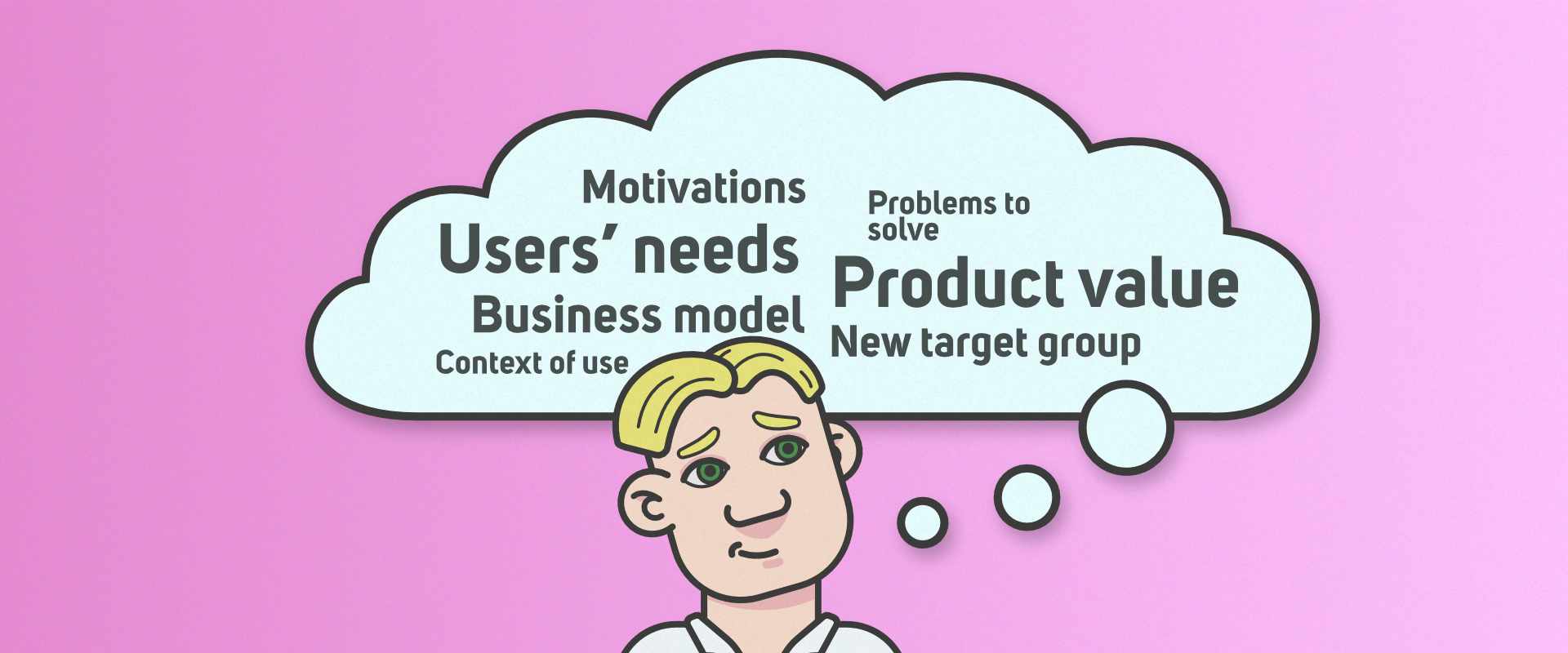
User research – methods
First, you set up your goals, and then we choose suitable research methods. There are many different solutions that can tell us more about users’ problems and motivations. Which one is best?
Spoiler alert: it depends.
There is no single right approach to user research. For a start, you need to know that it can be qualitative or quantitative.
Qualitative research
It’s the best solution if you want to get a grasp on people’s opinions, motivations, approaches, or concerns, for example. Qualitative research is a great way to know the user’s perspective.
They focus on observation, interviews. The sample can be quite small. Oftentimes, just a few interviews can become a priceless source of information.
It can help you identify why people do what they do, what prevents them from achieving their goals, or what stands behind their decisions.
Examples of qualitative techniques:
- Interviews with the potential users
- Field study
- Diary study
Quantitative research
What do users do? How old are they usually? What are the current trends we should take into consideration? To answer these questions, go for quantitative methods. They rely on much bigger numbers compared to qualitative research. It’s the only way to get representative results.
Data obtain this way allows us to make general conclusions.
Examples of quantitative techniques:
- Surveys
- Product analytics
According to the survey conducted by the Norman Nielsen Group, among the popular methods used in the Product Discovery phase, we can also find stakeholder interviews, competitive analysis, and usability testing, for example.
It’s good to know more, so we encourage you to read about the differences between qualitative and quantitative research. But right now, just keep in mind that it’s best to combine both types of data to get the full picture.
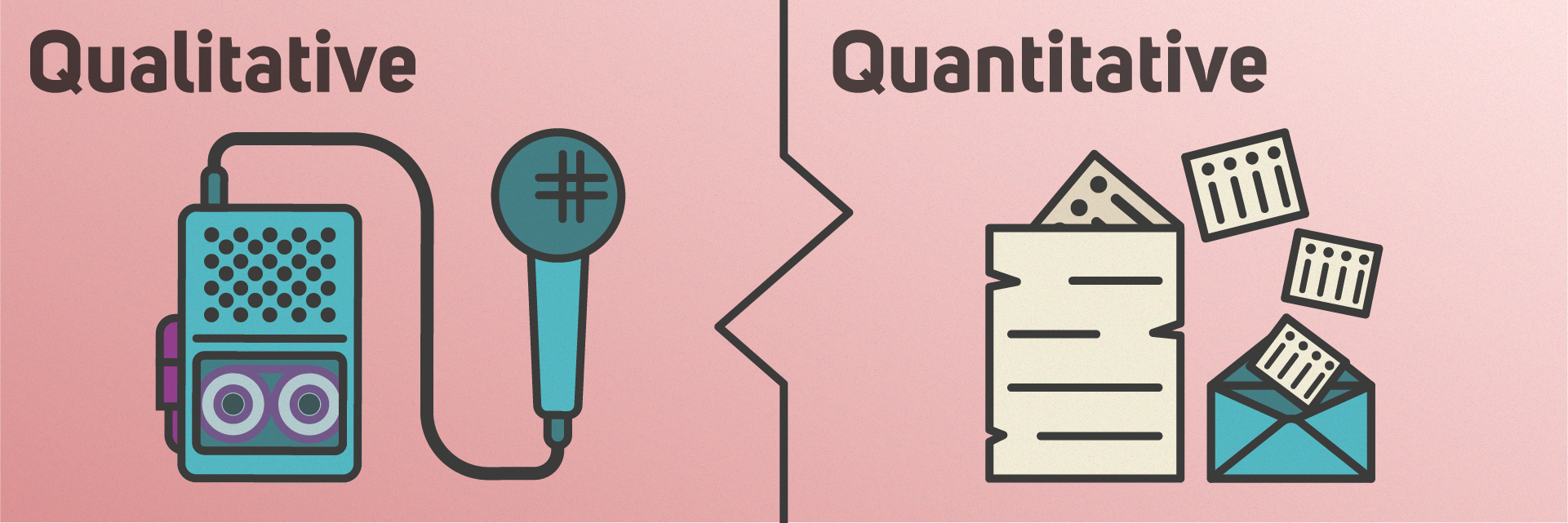
– Use case –
To truly understand why you need to start with some research, let me introduce Kim. She works in a small company. It develops an app for dog owners who want to find the best places for a walk.
But how do people choose the best routes? What do they take into consideration? What information they’d like to see? Kim had to find that out.
The research: Her first source of information was local Facebook groups for dog owners in big cities. She’s been checking if there are any posts concerning the walks. She also contacted a few owners and went for a walk with them to see first-hand what they pay attention to.
The result: It turned out that people often have two or three favorite paths, and they seldom look for any new options. However, they choose the particular ones depending on many factors, such as crowds, weather, bins, special areas dedicated to dogs, etc.
Based on Kim’s research, her team designed some new features. They also decided not to implement certain functionalities because they probably wouldn’t spark users’ interest. At the end of a day, it allowed them to save time and money.
Product Discovery workshop
We have the information, and now we need to make use of it. A proven way of processing data about users is a UX workshop. As a result of it, you can get ideas for solutions that will improve the product. A workshop agenda must be adjusted to the goal your company is trying to achieve. So, in order to select the best Product Discovery techniques for your project, first, we need to know your challenges and expectations.
Who takes part in such a workshop? The development team and the people who have the greatest knowledge about users and the business, such as a product owner, a product manager, or a person who collects customer feedback.
Examples of workshop artifacts
During the workshop, the participants perform the activities that help them come up with the best solutions.
#User persona
It’s a profile of a person that represents a group of users you build the app for. It describes the demographics, user’s lifestyle, motivations, pains, and needs. Usually, there are several user personas, but you should choose the one that is the most important for your business.
#Customer Journey Map
This map presents the entire path users complete to solve the problem. Every stage shows their activities, thoughts, and feelings. You can use it to identify the pain points, to understand what people expect to achieve, and finally, to find the opportunities for your app.
#Value Proposition Canvas (VPC)
It consists of two parts – the first one revolves around users (jobs-to-be-done, pains, gains), while the second one puts the product into the spotlight (product services, pain relievers, gain creators). This canvas is recommended when you want to determine what your product should offer.
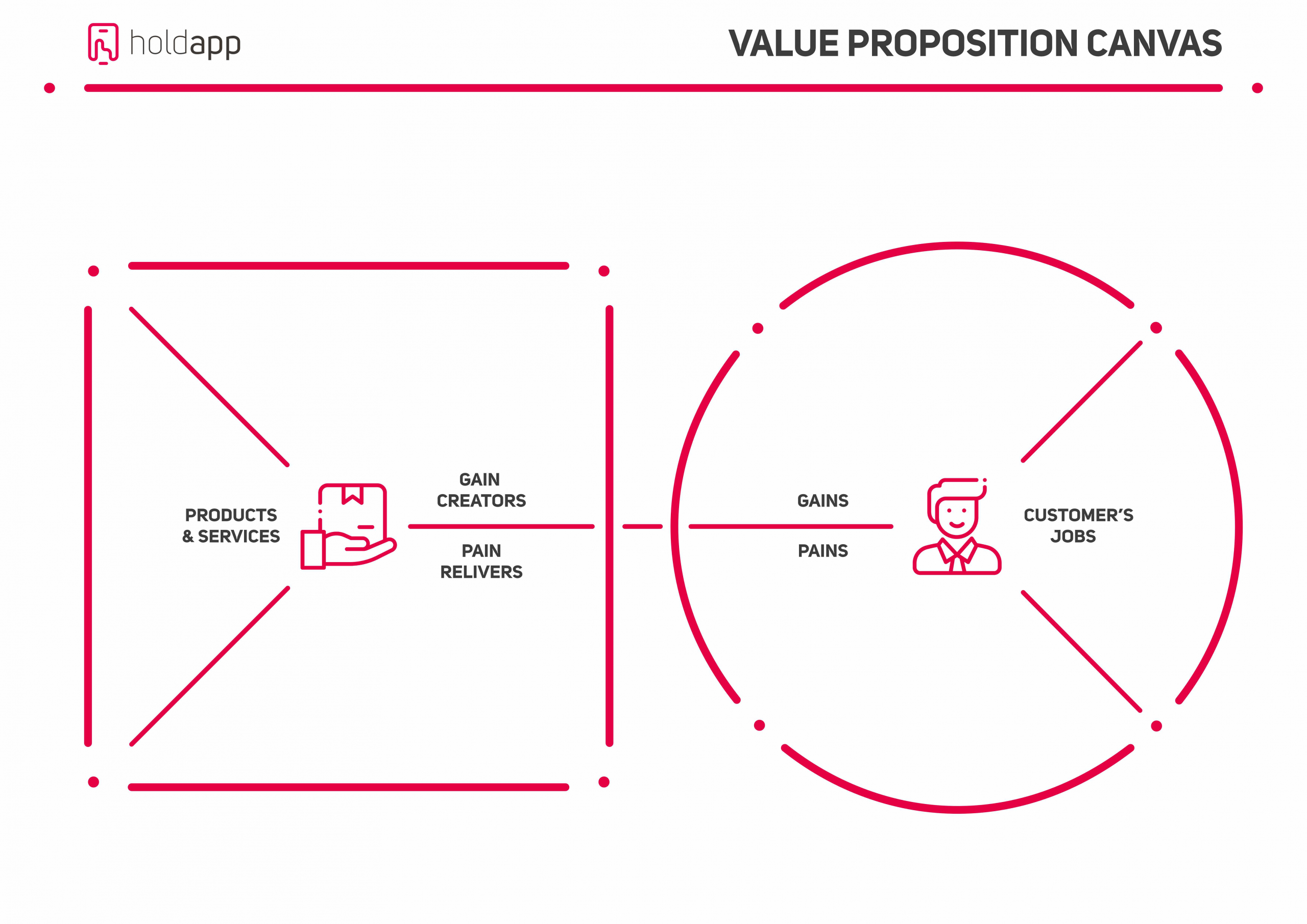
#User stories
They describe what people do with a product and why they do it. Stories are based on a simple formula: As a [who], I want to [do what] so that I can [achieve something].
Example: As a dog owner, I want to check when his favorite park is overcrowded so that I can go to a quiet place.
You need some help with the Product Discovery phase? Read more about our workshops and tell us what you’d like to achieve.
– Use case –
Let’s get back to Kim. She organized the data collected during the research. Now, her goal is to pinpoint:
- what users want to achieve (apart from simply walking the dog)
- how the app can support the target audience
- what features are necessary to fix the problem
- what additional functionalities the app could have
- how does it all help the company meet its business goals
She expects to find the answers during the Product Discovery workshop.
Its participants created three user personas and selected the primary one for whom the product mostly is. Then, they filled out a Value Proposition Canvas. They also listed the features that must be included in the Minimum Viable Product (MVP) and those that should be added later on.
Next steps
When the Product Discovery process comes to an end, the team still has a lot of work to do.
Step nr 1: the UI designer looks into the artifacts, such as personas or Customer Journey Maps. Based on them and other resources, they prepare the designs of the app’s interface.
When the UI design is ready (or at least the main user flows), it is recommended to conduct usability tests. This way you can check what elements and solutions work well and what should be improved.
Step nr 2: software engineers list all the features the app must have and estimate the development time.
Step nr 3: the product team meets the client on a kickoff meeting. It’s when we discuss the organizational issues, discuss the business objectives, and share product-related information and materials.
After the kickoff, the product development process begins!
Continuous discovery – why it’s best to keep an eye on data?
People expect you to add new features, make some actions easier, adjust UI to current trends, etc.
But what exactly should you change or add? Continuous discovery will help you find the answer. Because the discovery process doesn’t end with the app launch. Or at least it shouldn’t.
It’s a good practice to keep on gathering the user feedback and measuring the results. It allows the team to make better decisions based on data and see if the new elements were positively received by users.
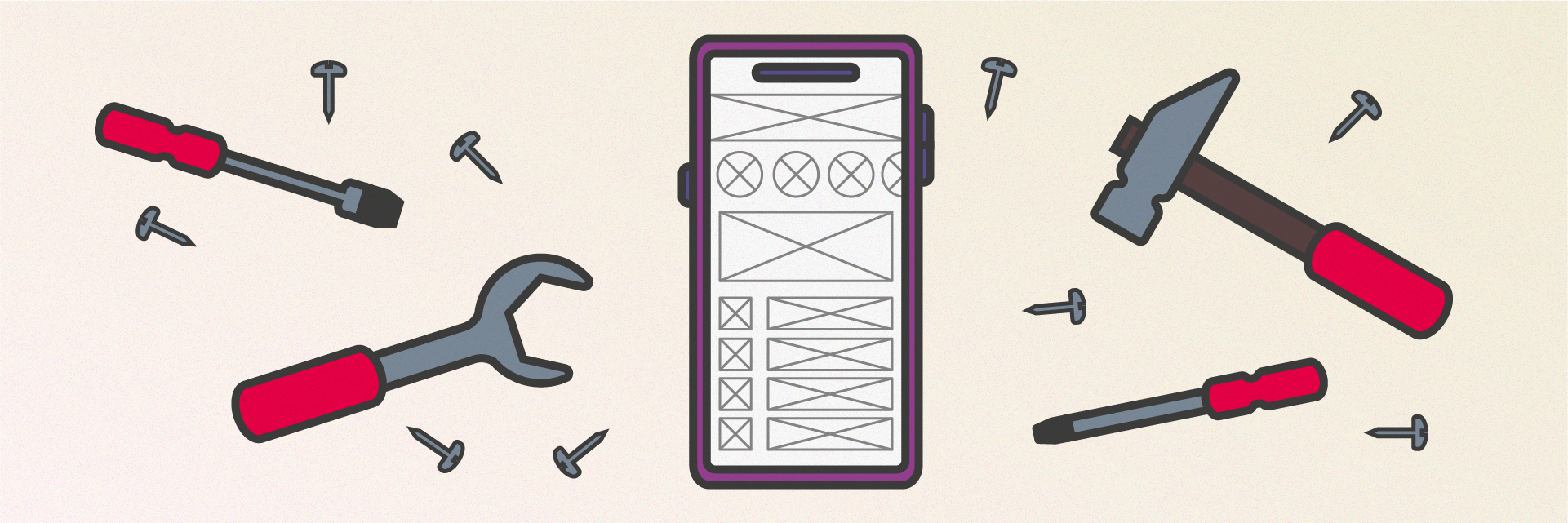 Common concerns about the Discovery phase
Common concerns about the Discovery phase
Although it seems to be the best way of avoiding costly mistakes, many companies still have concerns that make them less eager to start this process. Why?
It takes too much time to do the research
Why don’t companies run the Product Discovery process? “Time pressure to deliver” was the most popular reason in the survey prepared by the NN Group.
To tell you the truth, sometimes the discovery process does take a significant amount of time. However, it’s not always the case.
If you tell us straight ahead how much time you have, we will try to adjust the methods to your timeframe.
Also, remember that the research may show that some features you want to have aren’t necessary. As a result, additional time spent on the Product Discovery saves you much time on development and testing.
The Discovery Process is too costly
You can’t stretch the budget enough to cover the Product Discovery expenses? Maybe you won’t need to. The research allows you to identify the features that shouldn’t be in the app. So, you save not just time but also money for the project execution.
And what if you find an idea that didn’t cross your mind before? You might get a functionality that will make your product stand out from the competition.
Plus, if something goes awry, you will have to hire a researcher anyway – in the subsequent phase of the project. However, the overall cost will be higher, including fixes and potentially significant changes.
We already know who our users are and what they want
We can guess that a lot of product managers said that before. Some months later, many of them weren’t smiling when reading the reports.
Why? Because the vision of their target audience is often biased and constructed upon mere assumptions and guesses. Even if some research has been done (for marketing purposes, for example), it doesn’t automatically mean the obtained data will be helpful in our project.
The choice of methods and the way the questions are asked are all important factors if we want to get access to reliable information.
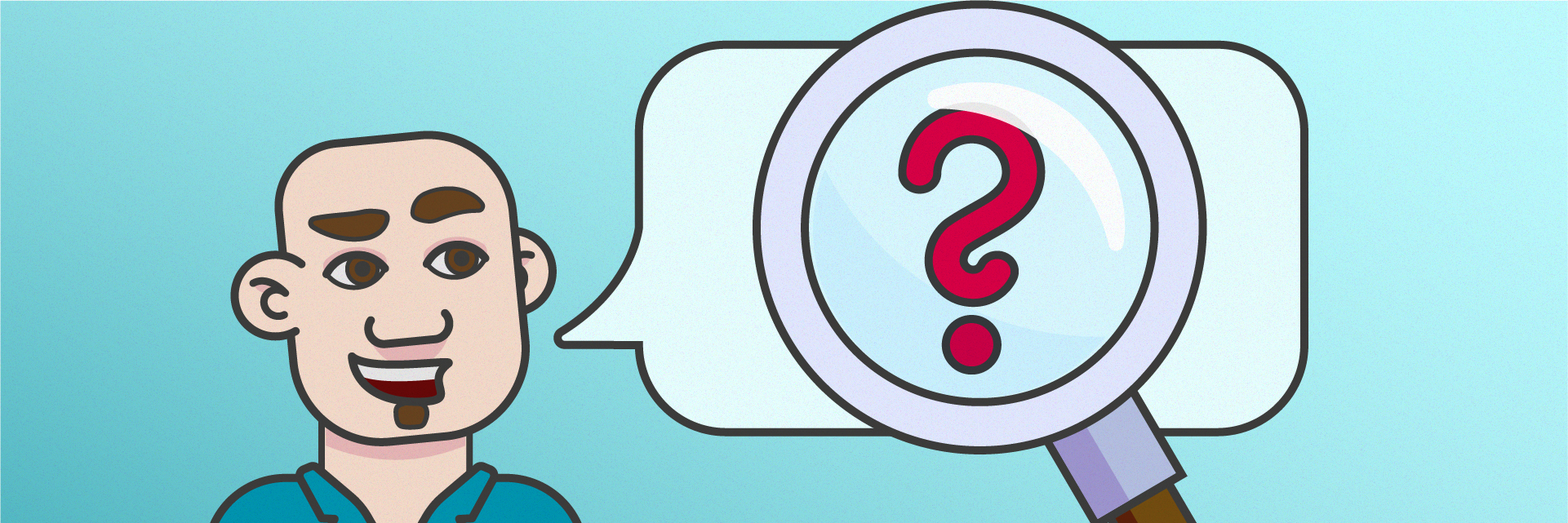
Summary
The Product Discovery process is your way to go if you want to know users better. It helps you find out what they might like and what their concerns are.
This is also the solution that allows you to identify the business opportunities for your product.
Last but not least, it can save you a lot of money and time.
If you want someone to guide you during the Discovery Process – contact us. We will be happy to help you out!
Read more about the app development lifecycle:






